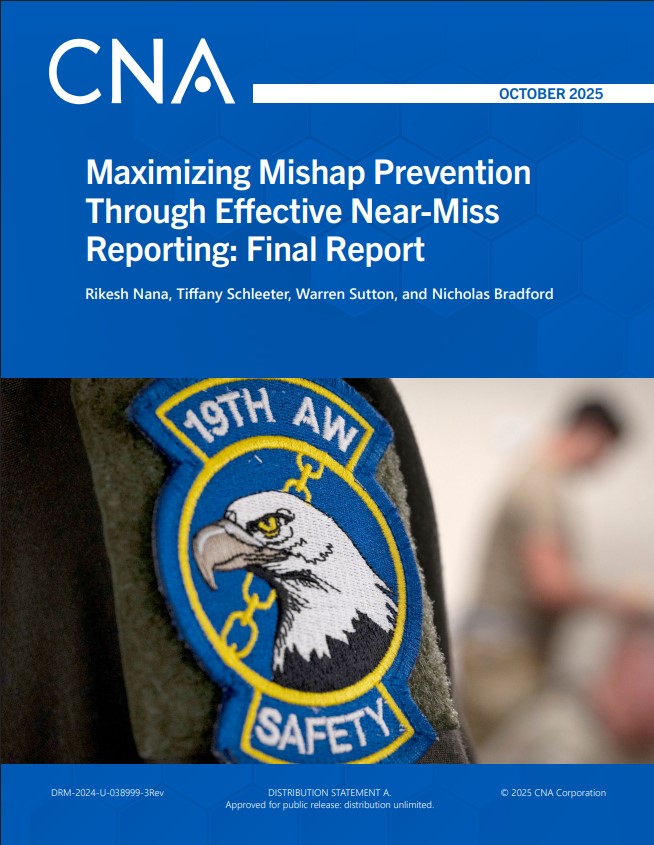The Department of Defense (DOD) is exploring proactive ways to continue inculcating an enduring culture of safety, including more effective near-miss event reporting. Analyzing near misses (i.e., events with the potential to cause serious consequences to individuals or property but resulting in few, if any, consequences) may help DOD to understand any precursors common to both near misses and actual mishaps. In support of the Defense Safety Oversight Council and the Joint Safety Council’s ongoing risk reduction efforts, the Office of the Assistant Secretary of Defense for Readiness, Force Safety and Occupational Health (FSOH) tasked CNA with (1) examining how DOD currently manages near-miss data and reporting, (2) researching how commercial and other government entities capture and use near-miss data, and (3) recommending approaches for DOD to optimize near-miss systems; data reporting, collection, and analysis; and near-miss-related process improvement strategies, such as modifying training to address near-miss precursors.
Approach
Our approach to exploring optimal near-miss systems involved the following sources:
- A qualitative coding and comparison of non-DOD, DOD, and service near-miss data elements.
- Discussions with 13 non-DOD near-miss subject matter experts (SMEs) from the following industries: health care and social assistance, retail trade, transportation and warehousing, food services, and construction.
- Discussions with 6 service near-miss SMEs with expertise in the following systems at the following entities:
- Army Safety Management Information System 2.0, operated by the US Army Combat Readiness Center
- Bird Avoidance Strike Hazard and Hazard Reports, operated by Naval Safety Command
- Aerial Delivery Fields Services Malfunction Reporting System and Malfunction Review Board, operated by the Army’s Aerial Delivery Manual and Malfunction Office
- Navy Weight Handling Database Management Application, operated by the Navy Crane Center
- Air Force Safety Automated System, operated by the Air Force Safety Center
- Airman Safety Action Program, operated by the Aviation Safety Division at Air Force Safety Center
Approved for public release: distribution unlimited.
Details
- Pages: 55
- Document Number: DRM-2024-U-038999-3Rev
- Publication Date: 10/20/2025



